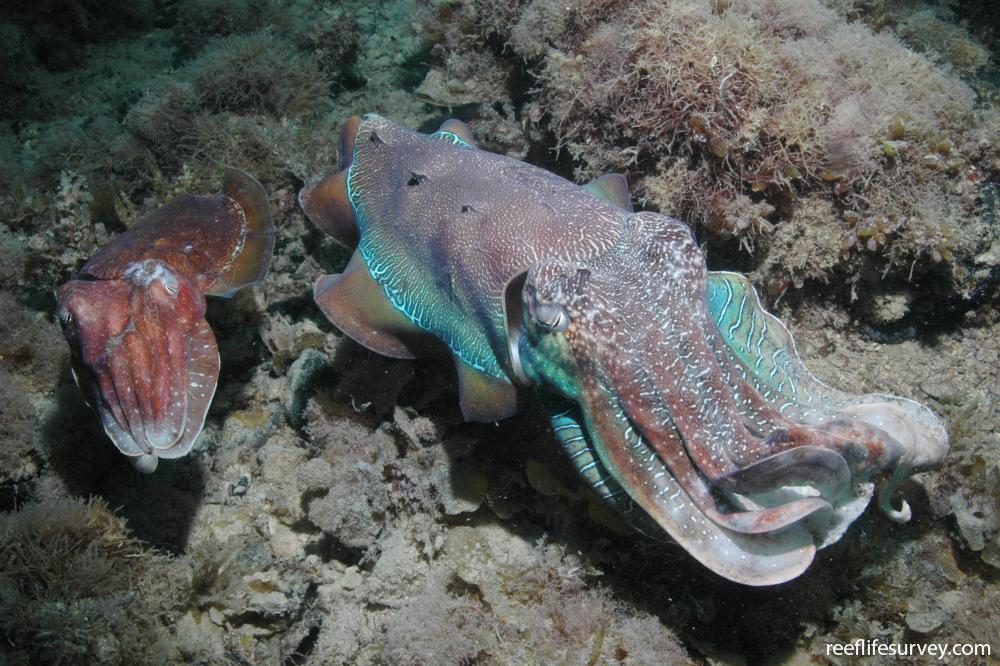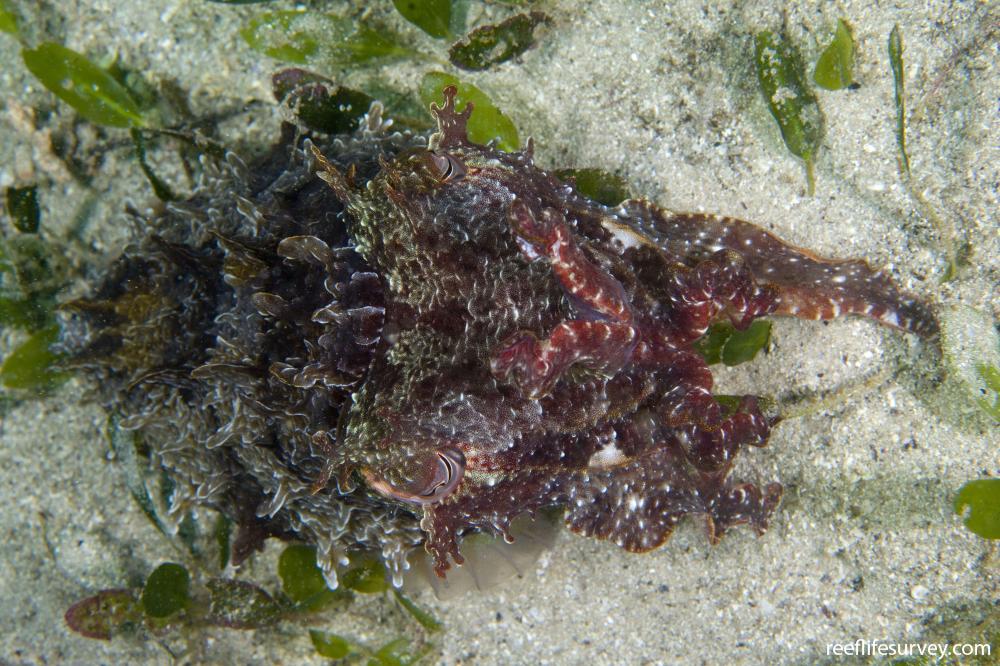Ascarosepion apama
Giant cuttle | Sepia apamaSimilar Species
Same Genus
Distribution
Temperate Australasia
Description
Most abundant and by far the largest local species of cuttlefish. The species can usually be recognised by the raised skin flaps, and it has three flat skin folds behind each eye. Mature animals are often curious to the point of aggressively approaching and confronting divers. The cuttlebone of this species is broad with a small spine and has a white-grey upper surface, in contrast to the pink of most other species.
Information
Max Size: N/A cm
Sea Temperature Range: 12.5-23.3°C
Depth: 0-100m
Habitat Generalization Index: N/A
Also referred to as the SGI (Species Generalisation Index), this describes the habitat niche breadth of the species. Species with values less than 15 are found in a relatively narrow range of reef habitat types (specialists), while those over 25 may be found on most hard substrates within their range (generalists). Learn more here.
Conservation and Rarity
IUCN Status: Near Threatened
Occurrence: Common (24.8% of sites)
Occurrence describes how often the species is found on surveys within its distribution. It is calculated as the % of reef sites surveyed by RLS divers across all the ecoregions in which the species has been observed
Abundance: Few (2 per transect)
Abundance is calculated as the average number of individuals recorded per RLS transect, where present.
Edit by: GJ Edgar. 2008. Australian Marine Life. New Holland, Sydney



















